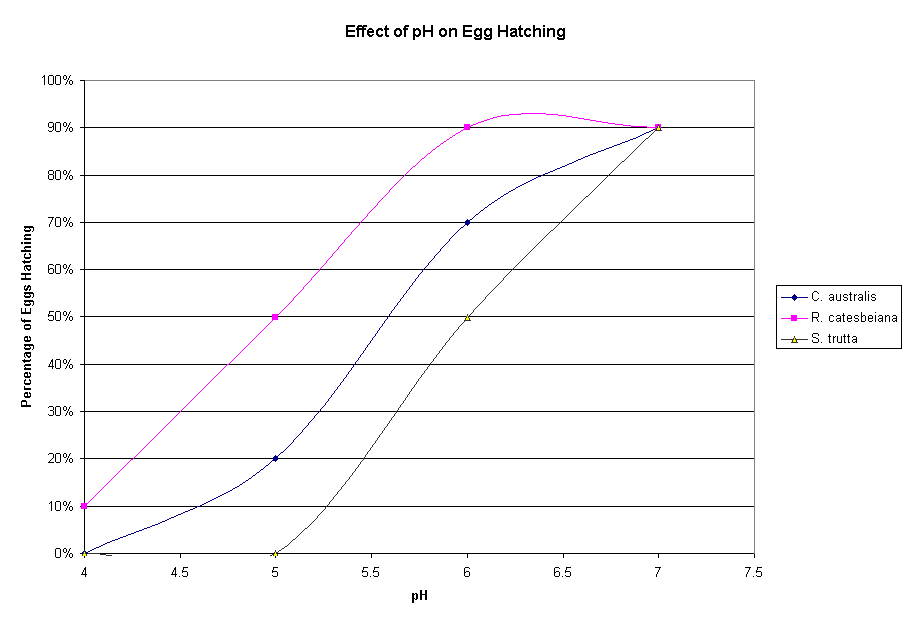This section describes the results of your work, including tables, graphs and pictures or drawings. Be sure to include a written summary of the data found in your tables and figures, i.e. this section is more than just a series of graphs or tables. Recall that each axis of a graph needs to be labeled. You should include a title above each table and add figure legends beneath each graph. You should provide all of your raw data but you should not display the same data in multiple graphs or tables.
Example 1:
Frogs were the most resistant to decreases in pH, with 50% of the eggs hatching at a pH of 5 (Table I). The trout were the most sensitive, with 50% of the eggs hatching at a pH of 6. Clam sensitivity was in between, with 20% hatching at pH 5 and 70% hatching at pH 6. All three species showed the same rate of egg hatching at neutral pH (7.0).
Table I: Effect of pH on Egg Hatching.
|
pH |
4 |
5 |
6 |
7 |
|
C. australis |
0% |
20% |
70% |
90% |
|
R. catesbeiana |
10% |
50% |
90% |
90% |
|
S. trutta |
0% |
0% |
50% |
90% |
OR
Example 2:
Frogs were the most resistant to decreases in pH, with 50% of the eggs hatching at a pH of 5 (Figure 1). The trout were the most sensitive, with 50% of the eggs hatching at a pH of 6. Clam sensitivity was in between, with 20% hatching at pH 5 and 70% hatching at pH 6. All three species showed the same rate of egg hatching at neutral pH (7.0).

Figure 1. Eggs from each species were added to an aquarium at the indicated pH. Egg hatching rates were monitored for two weeks. Each point represents the average values from two aquaria.